With grocery prices hitting Canadian wallets harder than ever, eating healthy can feel like a luxury. But registered dietitian Andy De Santis says you don’t need to spend a fortune to eat well.
From shopping in-season produce to utilizing canned foods in your recipes, it’s possible to cut food costs while still getting key nutrients. Below, check out eight smart strategies that’ll slash your grocery bill without sacrificing nutrition.
1. Stock up on frozen fruits and vegetables
Forget the myth that frozen produce is nutritionally inferior. It’s often just as good as fresh, and in some cases, better. Fruits and vegetables are typically frozen at peak ripeness when they’re most nutritious.
De Santis notes that “frozen blueberries are even higher in nutritional value than fresh blueberries. When blueberries are frozen, it puts a stressor on them and increases their anthocyanins.”
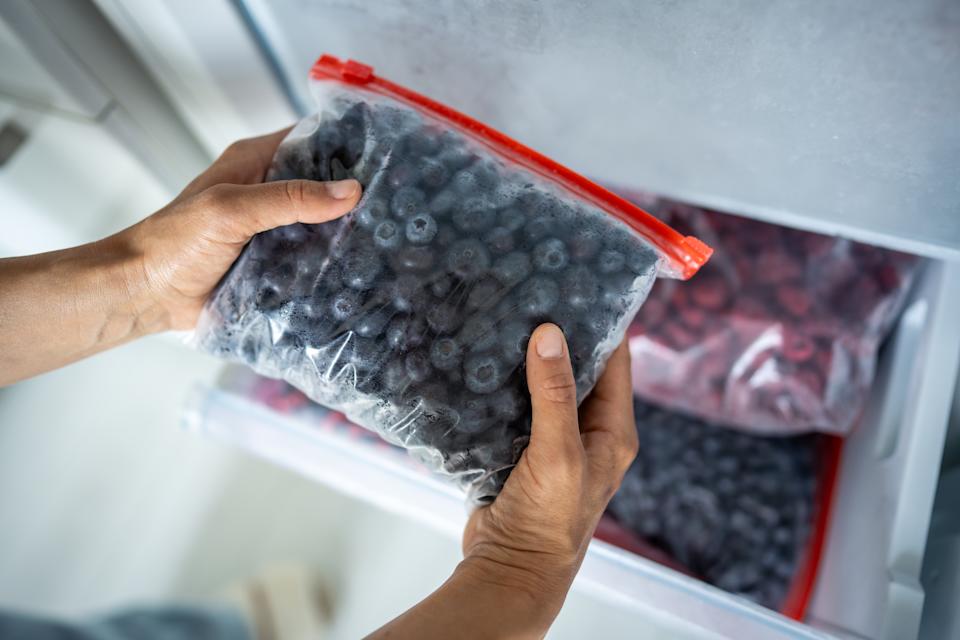

De Santis says frozen blueberries are even more healthy than fresh ones. (Photo via Getty Images)
This article is for informational purposes only and is not a substitute for professional medical advice, diagnosis or treatment. Contact a qualified medical professional before engaging in any physical activity, or making any changes to your diet, medication or lifestyle.
Anthocyanins are powerful antioxidants that give berries their deep colour and help fight inflammation.
Frozen produce is also typically more cost-effective than fresh versions, especially when fresh berries are out of season. Plus, frozen produce lasts for months without spoiling.
2. Give canned foods a chance
Don’t get caught up in the fresh vs. canned food debate when you’re trying to eat well on a budget. While fresh and frozen both have their place, canned foods deserve a spot in your healthy, economical diet too.
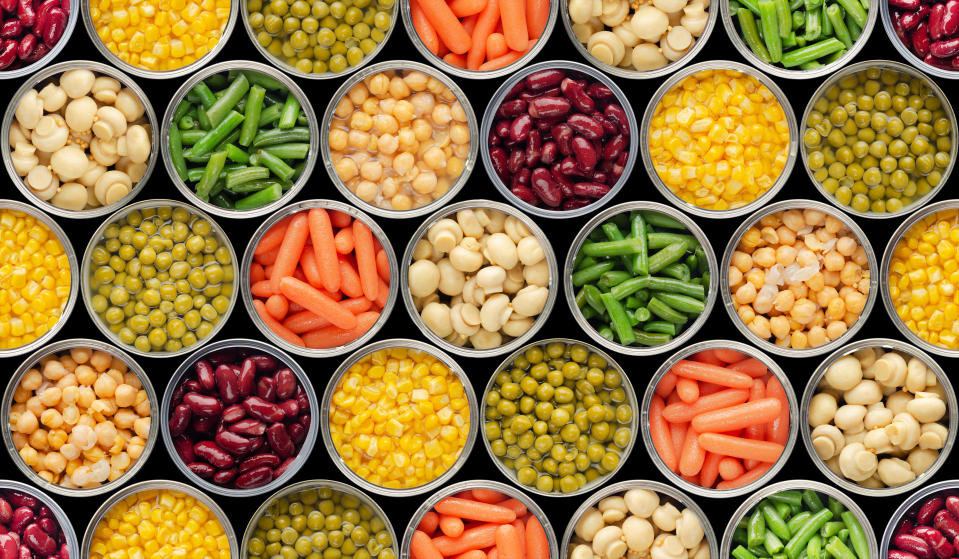

De Santis says there’s “not one clear winner” when it comes to fresh vs. canned food. (Photo via Getty Images)
“When it comes to fresh, frozen and canned produce, there is not one clear winner,” explains De Santis. “For example, eating canned artichoke, which may have added sodium, is always better than eating no artichoke.”
3. Shop in season for maximum savings
When you’re ready to shop, timing your fresh produce purchases can lead to major savings. When produce is in season, it’s more fresh and less expensive because supply is plentiful. Load up on corn and tomatoes in summer, then apples and squash in fall. Check local flyers each week for seasonal deals.


Buying corn, tomatoes are more in-season fruits and veggies are a great way to cut costs. (Photo via Getty Images)
Local farmers’ markets often offer the best deals on in-season produce, especially near closing time.
De Santis recommends also recommends shopping produce that’s affordable any time of the year.
“Green bananas are an affordable fruit that are available year round,” he says. They contain resistant starch which is very good for your gut bacteria.”
4. Choose rotisserie chicken over raw
When you need affordable meat protein, don’t overlook the prepared foods section.


A store-bought rotisserie chicken can save you cash. (Photo via Getty Images)
“Rotisserie chicken may be a better value than raw chicken,” says De Santis. “Often rotisserie chickens are used to draw customers in, so stores price them lower. The chicken may also be cooked closer to its expiry date, which extends its shelf life.”
Plus, you eliminate prep time and cooking energy costs. Many stores also discount rotisserie chickens near closing time.
5. Embrace generic brands and ditch speciality items
While you’re filling your cart with seasonal finds, don’t overlook the power of smart brand choices. Generic brands provide the same quality as name brands — often at significantly lower prices. Focus on non-perishable items like oats, brown rice, flour and spices.
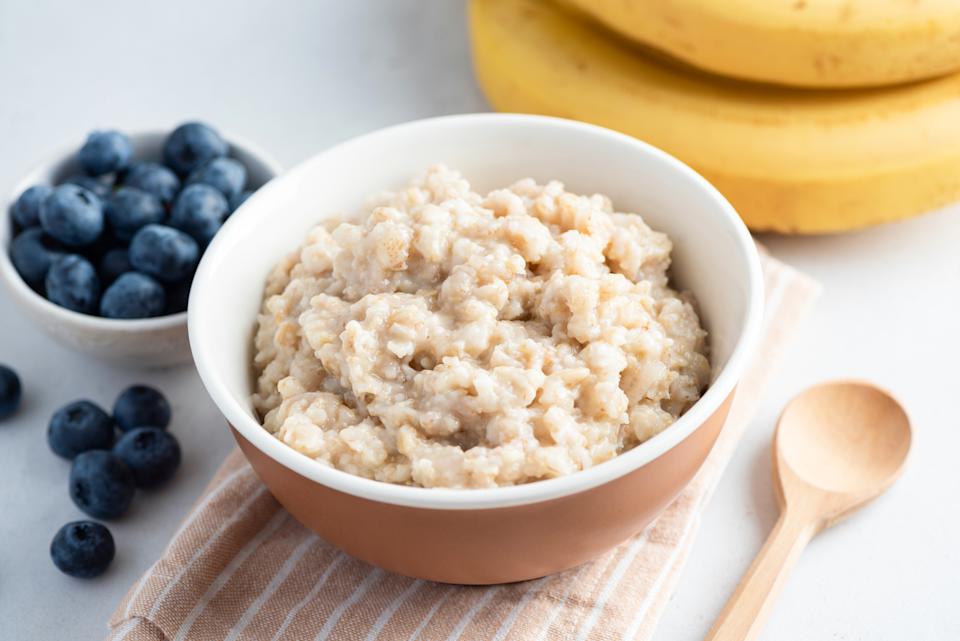

Oatmeal and rice are two foods you can easily swap name brands for generic ones. (Photo via Getty Images)
“If you are truly on a budget, also skip organic and specialty items like wild fish,” advises De Santis. “The priority should be eating enough fruits and vegetables, regardless of whether they’re organic.”
6. Use pulses for protein power
Beans, peas, chickpeas and lentils are incredibly economical and nutritious.
Fibre-rich legumes will give you the biggest bang for your buck,” explains De Santis. “Even adding a half a cup of beans to your meals can significantly increase your fibre intake.”
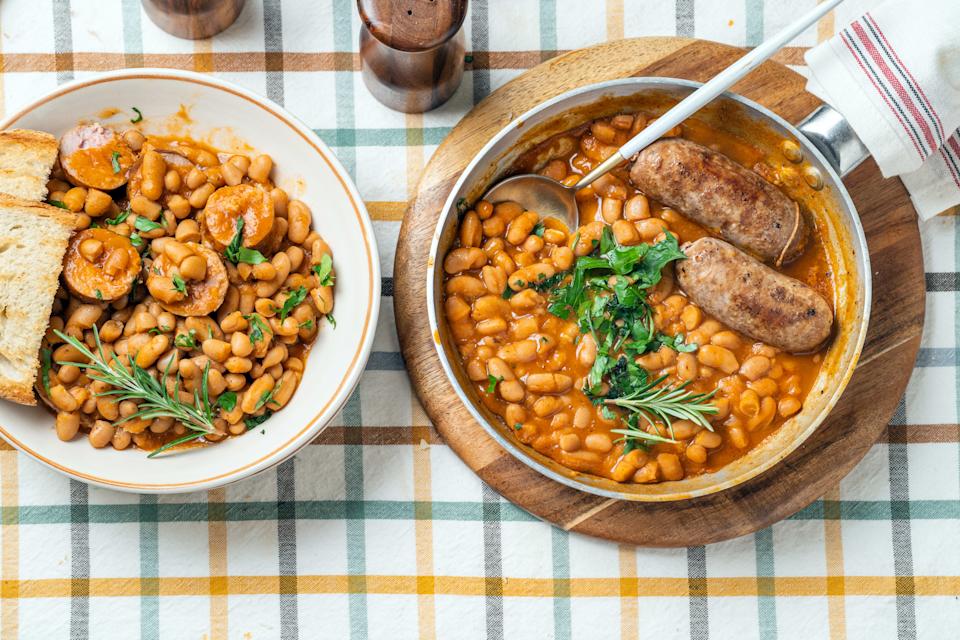

Adding beans to soup, salads and grain bowls offers up an affordable protein boost. (Photo via Getty Images)
Add beans to soups, salads and grain bowls for an affordable protein boost that increases fibre and keeps you feeling full longer.
7. Choose affordable nutritional all-stars
Some of the healthiest foods are also the most budget-friendly. These nutritional powerhouses deliver maximum vitamins and minerals without breaking the bank.
For vegetables, focus on year-round staples. “Carrots are an affordable vegetable that are rich in vitamin A,” notes De Santis.
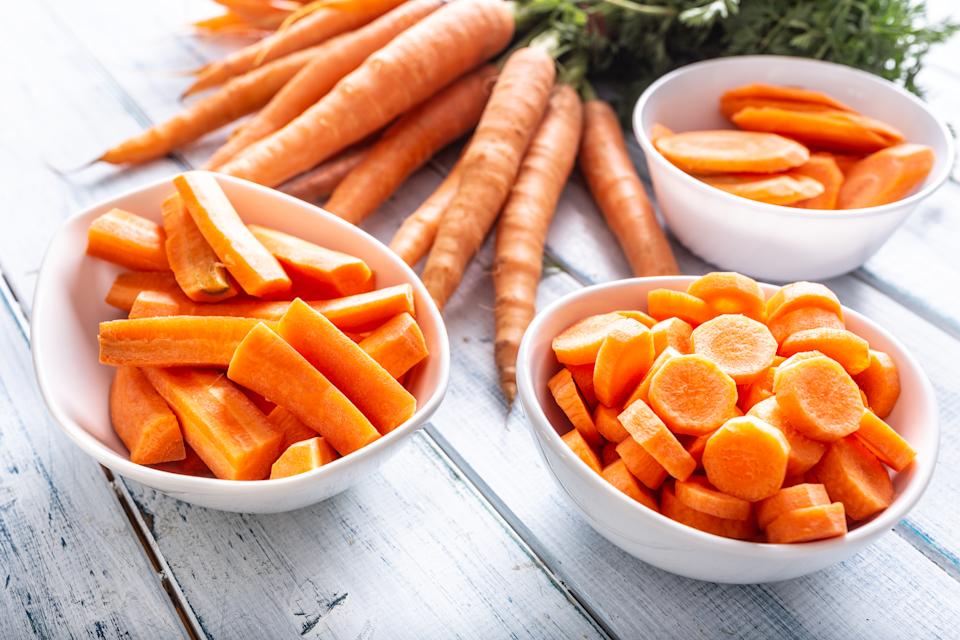

According to De Santis, some of the most healthy foods — like carrots — are also the most budget-friendly. (Photo via Getty Images)
Meanwhile, sweet potatoes provide beta-carotene, potassium and fibre at a great value. Green cabbage delivers vitamin C and vitamin K, and one head can stretch across several meals in soups, stir-fries or coleslaw.
Don’t overlook eggs, which offer complete protein at affordable prices — at least in Canada. De Santis also recommends sunflower seeds as an affordable source of healthy fats and protein.
8. Master meal planning
Planning your meals ahead of time is one of the most effective ways to cut grocery costs and reduce food waste. But De Santis has a surprising tip: shop more frequently, not less.


A surprising way to save money? Go to the grocery store more. (Photo via Getty Images)
“Go grocery shopping more often,” he says. “You are more likely to have the ingredients you need on-hand to make healthy meals.”
But there’s a catch: you have to go to the store with a plan.
He says to start by planning three to four meals weekly, check what ingredients you already have, then shop only for what you need.
The takeaway
The bottom line? Eating well doesn’t have to drain your bank account. With these expert-backed strategies, you can make nutritious meals and keep money in your pocket.
Let us know what you think by emailing us, commenting below and tweeting @YahooStyleCA! Follow us on Twitter and Instagram.

